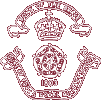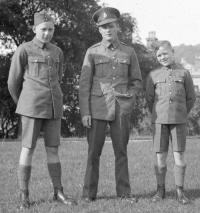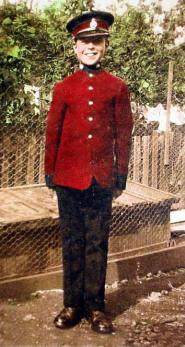


 |
 |
|
 |
||
| Navigation links at the bottom of this page | ||||||||
Berets khaki or blue? |
||||||||
What replaced the old khaki side hat worn until the end of WWII? Was it a khaki beret or a blue one? The question is a controversial one, for some maintain that the beret that replaced the side hat was blue. Others, who were there during the same changeover, are equally adamant that a khaki beret was first replacement hat issued; that a blue beret replaced the khaki version later. Even the school historian (reported to be writing a definitive history of the school, which will be a welcome addition to the School history) gave a qualified response to Colonel Gus Bainger's direct question on the subject. The School historian wrote:
Having no foundation in documentary evidence, this opinion is unreliable, for it is an opinion and not a statement of fact. Also, and because the writer has no personal experience in the matter, his 'To our knowledge…' is without meaning. Photographs both before and after the changeover are more reliable evidence. The evidence they provide is more definite although, according to proponents of one view on the subject or the other, black and white photographs can be deceptive. With this qualification, here are selected photographs that should allow readers to decide for themselves whether or khaki as well as blue berets were at one time worn. |
||||||||
 |
 |
 |
||||||
George and Fred McCarthy in their every day khaki uniforms in 1939 |
||||||||
The Harrington brothers, the centre figure a prefect flanked by his younger brothers in khaki short trousers and knee-high hose socks |
||||||||
Alec Johnson in pre-WWII ceremonial dress: scarlet jacket, red-striped blue trousers and peaked hat |
||||||||
Friend of a Harrington brother with Dover Castle in the background. |
Drum corps and bugle band wearing blue berets (see enlarged version). |
John Bentley (1951-60) of Haig House in the early 1950s |
||||||
Readers may decide for themselves whether berets have been blue from the beginning as stated by the School historian, an opinion strongly supported by many, or were first issued in khaki and later re-issued in blue. |
||||||||
| ||||||||||
|
© A. W. Cockerill 2011 Site Map Contact me | ||||||||||